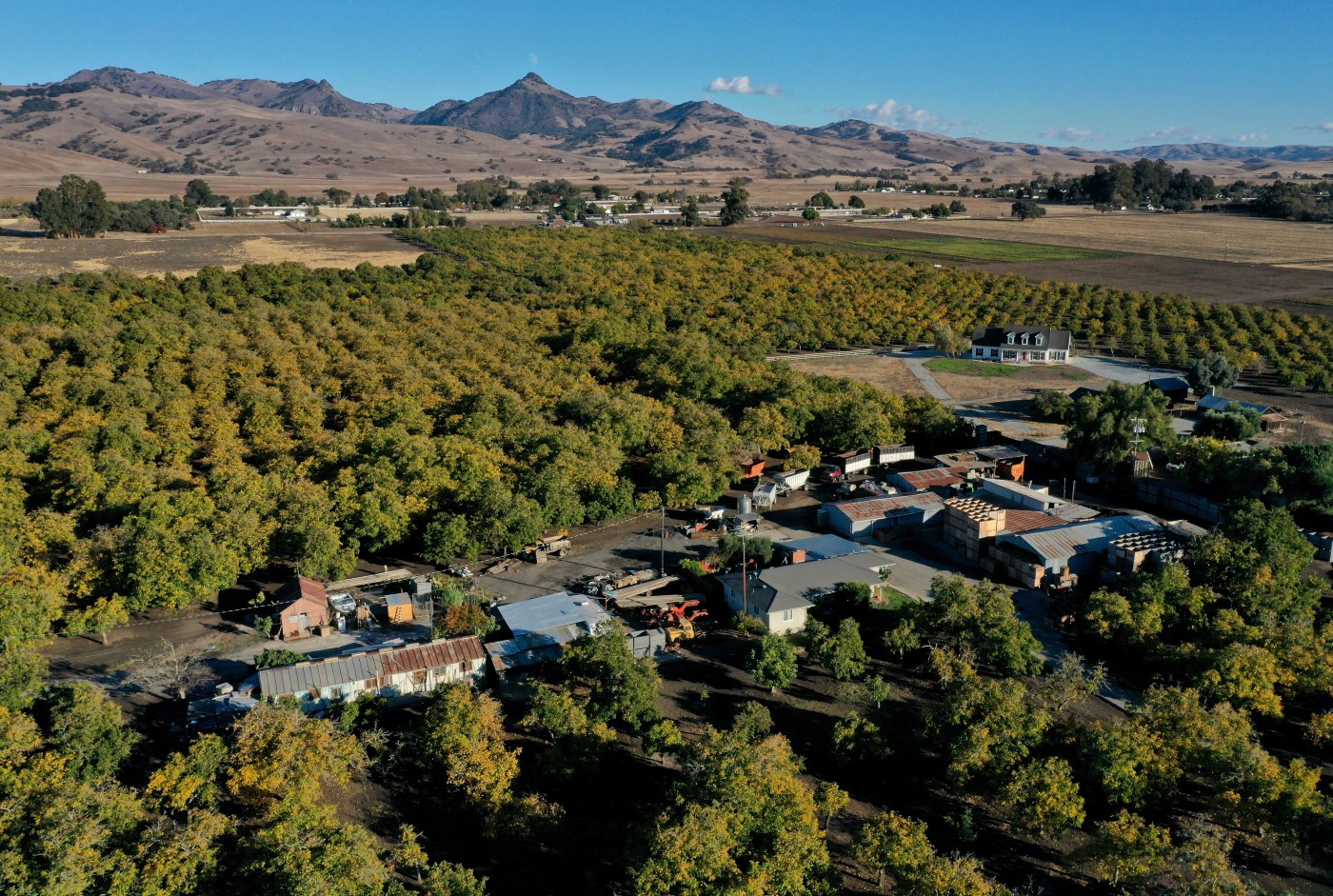
Farms or subdivisions? Ballot measure would curb development on Silicon Valley’s southern edges
When most people in the Bay Area think of San Benito County, they imagine rolling ranch lands, majestic condors at Pinnacles National Park and the 227-year-old Spanish mission at San Juan Bautista, which was featured in Alfred Hitchcock’s classic 1958 film “Vertigo.”
But increasingly they also see the rustic county 5 miles south of Gilroy as somewhere to live.
The median sale price of a home in San Benito County is $790,000, half of the $1.6 million cost in neighboring Santa Clara County. Slow-growth advocates –saying that Silicon Valley residents searching for cheaper housing are bringing too much traffic and sprawl and wrecking the area’s rural character — have placed a measure on the November ballot in San Benito County that could dramatically put the brakes on new development there.
Measure A would require voter approval before agricultural or ranch land in the county is rezoned for residential, commercial or industrial use. It would require new housing to be built, for the most part, in areas already developed, such as within the city of Hollister. And it would halt plans for truck stops, restaurants and hotels at four locations along Highway 101 west of Hollister. A simple majority vote is required for the ballot measure.
“We’re heavily impacted by Silicon Valley,” said Larry Rebecchi, a retired school teacher who has lived in the county seat of Hollister for 50 years and supports the measure. “People came down here because the housing is cheaper. The roads are terrible. Schools are overcrowded. We just need to slow down a little bit.”
San Benito County was the fastest-growing of all 58 counties in California between 2020 and 2023. In the decade before that, it was the second-fastest growing, behind Placer County near Sacramento. Since 2010, San Benito’s population has jumped 23%.
Measure A is backed by a coalition of environmental groups from around the Bay Area, including the Sierra Club, Audubon Society, Green Foothills and Save Mount Diablo. They note that Napa, Sonoma and Ventura counties passed similar measures years ago.
And they argue that San Benito County’s future is best built around agriculture, wineries, wildlife and tourism, rather than becoming a bedroom community full of people who leave their cul-de-sacs at 5 a.m. to drive a grueling commute to jobs in San Jose and the Peninsula.
Signs for and against Measure A, which would prohibit development on farmland in San Benito County without voter approval, are visible in Hollister, Calif., on Sunday, Oct. 13, 2024. (Paul Rogers/Bay Area News Group)
Opponents, however, say Measure A goes too far, limits property rights and could stall local economic growth.
“It will hurt the county’s ability to raise tax revenue for basic government services like public safety and fixing roads,” said Anthony Botelho, a former San Benito County supervisor. “It would be devastating in the long term. It would stop economic development.”
Botelho works for a Newport Beach company that is proposing to construct a large project, Strada Verde, that would include a test facility for self-driving cars, warehouses, stores and a hotel on 2,777 acres near the Highway 101 and Highway 25 intersection.
He cited a study the county commissioned this summer that concluded Measure A would cost the county $751,000 a year in lost taxes from hotels, retail sales and other sources through 2035 and eventually up to $14.8 million a year in the decades after that.
Opponents include the San Benito County Farm Bureau, San Benito County Sheriff Eric Taylor, developers and some labor unions.
San Benito County may be growing fast, opponents note, but it starts from a much smaller population. Even though its land area is the same size as Santa Clara County, its population is only 3% as big — 68,175 in 2023 — about the same as Santa Clara County’s population was in 1910.
Two years ago, voters rejected a similar ballot question, Measure Q, by 56% to 44%.
But turnout is expected to be larger this time due to the presidential race. This year, as then, the measure is attracting considerable attention from outside the area.
The No on A campaign website warns “outside donors” are “spending big money to deceive local voters.”
The No campaign, however, has raised more money than the Yes campaign — $270,000 in total compared to $166,000 as of Tuesday — and most of that is from outside donors. Of the No campaign’s funding, 71%, or $191,000, came from the California Association of Realtors in Los Angeles and the National Association of Realtors in Chicago. Another $25,000 is from Bristol SB, a company controlled by Newport Beach developer John Patterson.
“Measure A would strip property owners of rights that they have held for generations and the local county government of its decision-making authority,” said Beth Carbone, president of the San Benito County Association of Realtors.
The Yes campaign also has big outside donors.
Among them are Patty Quillin, of Santa Cruz, a documentary film producer who gave $49,000. Quillin is married to Reed Hastings, the billionaire chairman of Netflix. Another Silicon Valley donor who contributed $49,000 is Charles Knowles, of Los Altos, a Stanford-educated entrepreneur who started Rubicon Technology in the 1990s, then founded the Wildlife Conservation Network, a group that preserves cheetahs, elephants, snow leopards and other species worldwide.
Save Mount Diablo, based in Walnut Creek, gave $40,000 to the Yes campaign. It says that the area is a critical link for deer, mountain lions, tule elk, condors and other wildlife moving across the region.
“San Benito County is the biggest part of the Diablo Range,” said Seth Adams, land conservation director for Save Mount Diablo. “It has incredible resources. It is a gem. It’s a more important wildlife corridor than even Altamont Pass. Any pressure we can take off open space and agricultural lands will lead to more preservation.”


